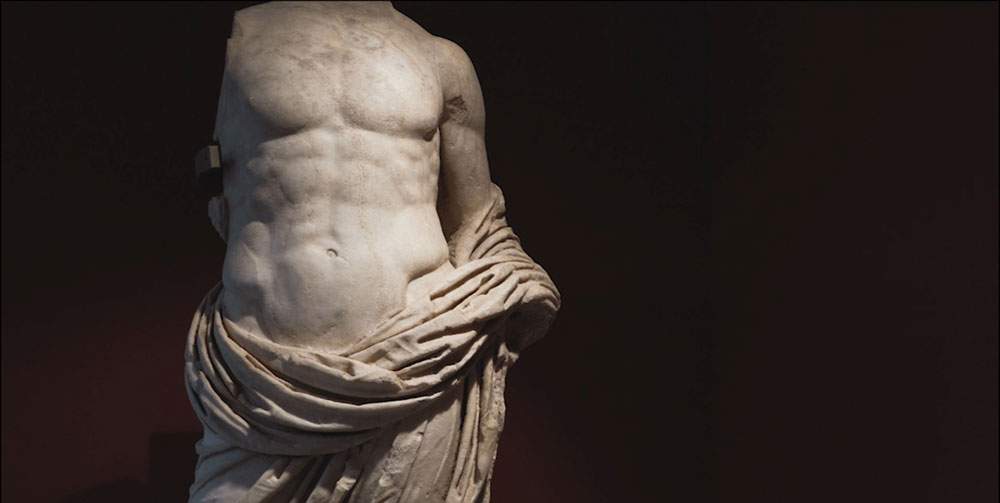A new archaeological museum for the Roman Camonica Valley.
In the historic center of Cividate Camuno, in the province of Brescia, the new National Archaeological Museum of the Camonica Valley will open from June 11, 2021. It will be the new museum of reference for the Roman Camonica Valley, among the most amazing realities of the entire Alpine arc, and will finally have a more appropriate location than the previous one. “The new museum, strongly desired by Stefano L’Occaso, who preceded me, will extend over spaces four times larger than the old site,” says Emanuela Daffra, regional director Museums Lombardy of the Ministry of Culture, “and will finally be able to adequately accommodate the artifacts already on display since 1981 in the first Archaeological Museum, now too cramped, as well as provide space for a heritage that is constantly growing, confirming the vital richness of archaeological research and the dynamism of the museums that tell the story.” Work on the new museum in Cividate Camuno, the ancient Civitas Camunnorum, is now complete, at the initiative of the municipality and the Lombardy Regional Museums Directorate, with the collaboration of the Soprintendenza Archeologia Belle Arti e Paesaggio for the provinces of Bergamo and Brescia and the contribution of the Lombardy Region and the Comunità Montana di Valle Camonica.
According to Serena Solano, archaeological officer of the Soprintendenza Archeologia Belle Arti e Paesaggio for the Provinces of Bergamo and Brescia, director of the Roman Camonica Valley Parks and scientific curator of the new museum project, “the mission of the museum is to tell the story of the encounter between Camuni and Romans, illustrating the changes and novelties along with the aspects of overlap and continuity. Indeed, the Camonica Valley exemplifies in an extraordinary way the Romanization of an alpine territory, through archaeological sites and evidences, including monumental ones, that allow us to decline the process in its multiple aspects, from the transformation of the territory, to the exploitation of resources, cults, settlements, aspects of daily life, public spaces, and the funerary sphere. The new museum, with cross-references to nearby places as well, contextualizes the findings of the Camonica Valley within the broader framework of the Alpine arc, thus positioning itself as a museum of the Romanization of the Alps.”
Designed by Brescia-based architecture firm Volta, the new museum is divided into eight sections, where Roman-era remains found in Cividate Camuno and the area will be displayed: a rich epigraphic collection, important architectural and sculptural elements, and rich grave goods from the necropolises, with pendants and amulets also in gold and silver.
The new museum venue also brings together exceptional objects, such as the charred wooden door dating from the 2nd-1st century B.C. found at Pescarzo di Capo di Ponte, among the best preserved from that period in the entire Alpine arc, the statue of the goddess Minerva from the sanctuary of Breno, in Greek marble, and a heroic male nude portrait from the forum area of Cividate Camuno in local marble from Vezza d’Oglio. Highlighting the link between the museum and territorial history is a small archaeological area, recently enhanced in the building’s inner courtyard.
The new museum thus intends to be the fulcrum, starting point and ending point of the Roman Camonica Valley route, which in Cividate Camuno has as other key stops the forum area and the Archaeological Park of the theater and amphitheater and, not far away, the Archaeological Park of the Sanctuary of Minerva in Spinera di Breno.
Image: Detail of local marble statue from Vezza d’Oglio (upper Camonica Valley) depicting a male figure portrayed in heroic pose, possibly a young prince of the imperial family. Dated to the Julio-Claudian age, it comes from the forum area of ancient Civitas Camunnorum. I-II AD.
 |
| A new archaeological museum for the Roman Camonica Valley. |
Warning: the translation into English of the original Italian article was created using automatic tools. We undertake to review all articles, but we do not guarantee the total absence of inaccuracies in the translation due to the program. You can find the original by clicking on the ITA button. If you find any mistake,please contact us.




























